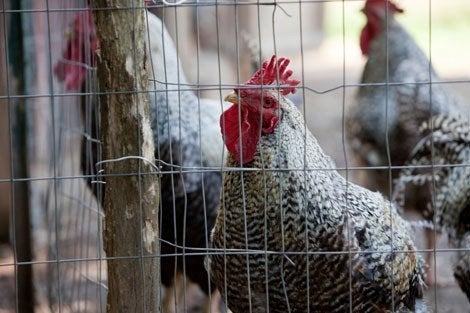Research in mammals that aims to prevent future influenza pandemics raises ethical, public health concerns
For immediate release: May 20, 2014
Boston, MA — Experiments creating dangerous flu strains that are transmissible between mammals pose too great a risk to human life from potential release, according to an editorial by researchers from Harvard School of Public Health (HSPH) and Yale School of Public Health. The researchers are calling for greater scrutiny of experiments that make virulent influenza strains transmissible, and for future studies on flu transmission to use safer and more effective alternative approaches.
“These recent studies raise strong ethical questions,” said lead author Marc Lipsitch, professor of epidemiology and director of the Center for Communicable Disease Dynamics at HSPH. “We have accepted principles, embodied in the Nuremberg Code, that say that biomedical experiments posing a risk to human subjects should only be undertaken if they provide benefits that sufficiently offset the risks—and if there are no other means of obtaining those benefits. Although these experiments don’t involve people directly, they do put human life and well-being at risk.”
The editorial appears online May 20, 2014, in PLoS Medicine.
Several recently published papers have documented successful efforts to manipulate the ability of virulent avian flu strains to pass between ferrets, which respond to the virus comparably to humans. The aim of these studies is to provide evidence leading to improved pandemic flu surveillance and vaccine design.
Although experiments on these so-called novel potential pandemic pathogens (PPPs) are conducted at high levels of biosecurity, Lipsitch and Yale’s Alison Galvani argue that they pose a substantial risk to human life. Given that safe and effective methods exist for studying influenza, the potential benefits of experiments on PPPs do not outweigh the risks from an accidental release and global spread.
The authors call for the U.S. government and other funders to conduct a comprehensive risk-benefit analysis before backing further PPP studies. They estimate that if 10 high-containment laboratories in the United States were running such experiments for a decade, there would be a nearly 20% risk of at least one laboratory-acquired flu infection with the potential to spread. In countries operating under less-stringent conditions than the United States, the risk is much greater.
If a PPP were released, it could lead to widespread human-to-human transmission of a highly virulent virus. It is believed that the H1N1 flu strain that caused a pandemic in 1977 and continued to circulate for 20 years was accidently released from a lab in Russia or China.
Lipsitch and Galvani argue that alternative scientific approaches are not only less risky, but also more likely to generate results that can be readily translated into public health benefits. They outline several strategies, including incorporating sequence analysis and molecular-dynamics modeling to determine the genetic determinants of traits that predict transmissibility.
“Although it is unlikely that one of these PPPs will be released, it is enough of a possibility that we need to consider the risk and whether we could gain the same or greater public health benefits from spending the same money and resources on safer experiments,” Lipsitch said.
“Ethical Alternatives to Experiments with Novel Potential Pandemic Pathogens,” Marc Lipsitch, Alison P. Galvani,” PLoS Medicine, May 20, 2014
For more information:
Todd Datz
tdatz@hsph.harvard.edu
617.432.8413
photo: iStockphoto.com
###
Harvard School of Public Health brings together dedicated experts from many disciplines to educate new generations of global health leaders and produce powerful ideas that improve the lives and health of people everywhere. As a community of leading scientists, educators, and students, we work together to take innovative ideas from the laboratory to people’s lives—not only making scientific breakthroughs, but also working to change individual behaviors, public policies, and health care practices. Each year, more than 400 faculty members at HSPH teach 1,000-plus full-time students from around the world and train thousands more through online and executive education courses. Founded in 1913 as the Harvard-MIT School of Health Officers, the School is recognized as America’s oldest professional training program in public health.
